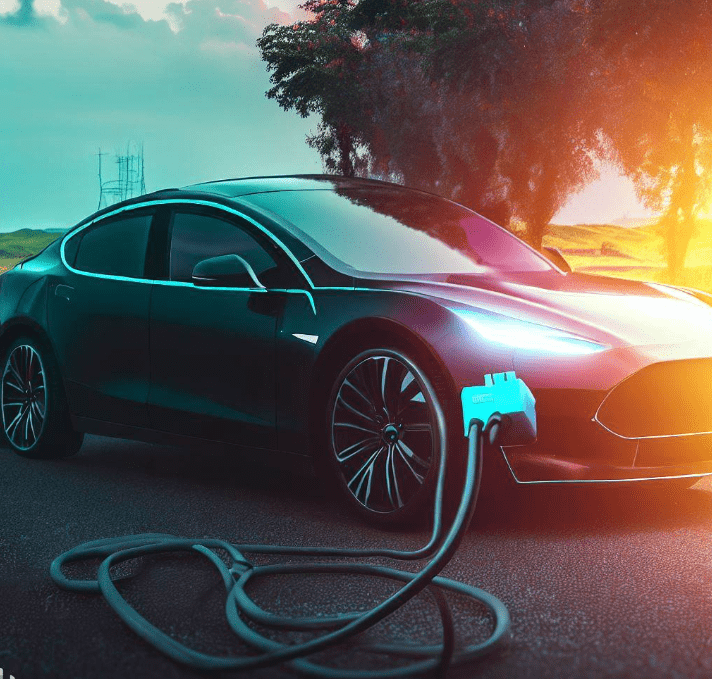Tesla Amperage: A Comprehensive Guide on Tesla AMPs Charge
Just think about never having to stop for gas again. No more waiting in line at the gas station or spending money on a limited resource. These are just a few advantages of driving a Tesla.
But you’ll want to know how much electricity electric cars use before using its ease and environmental friendliness. That paraphrases the inquiry, “How many amps do Tesla amperage?”
Tesla amperage:
Depending on the charging level and Tesla vehicle model, the amperage of a Tesla charger ranges from 15 to 300 amps.
The quickest chargers, which can draw up to 300 amps of current, are called superfast chargers, but they lack the ease of in-home charging.
New Tesla owners and those who want to acquire one frequently ask that question. You’ve come to the right place if you fall into one of these categories.
I’ve gathered all the details you require concerning Tesla charging in this blog post. So let’s get started straight away.

How Many Amps Does a Tesla Charger Draw?
Based on the charger type and the Tesla model, a Tesla charger can consume anywhere from 15 amps to 300 amps.
When charging the automobile at home, the lower end of this spectrum is more likely to occur, whereas the upper end is more likely at public charging stations with higher power output.
To start, there are three charging levels available for your Tesla;
- Level 1
- Level 2
- Level 3
The first level of EV charging, level 1, uses a conventional 120 V outlet with a 15 amp amperage and is the slowest.
When you put your car on the charger for an hour, it will have enough juice to travel 3 miles. Level 2 uses a 240-volt outlet with an amperage of roughly 40 amps and is significantly faster.
When using the Wall Connector, it is accessible at public charging stations as well as private residences.
For every hour it is connected to the charger at this charging level, you will have enough power to go 30 miles.
The fastest charging level, Level 3, uses a Superfast charger and a 480-volt system. Only commercial charging stations offer this option, charging your car at a 300-amp pace.
Of course, the maximum amperage that can be achieved is what is offered, and the real amperage that should be used to charge your Tesla varies on the model because each Tesla uses power differently.
What’s the Fastest Way To Charge a Tesla at Home?
The quickest method to charge your Tesla at home is using a wall connector from Tesla. When connected to a 240-volt electrical line, this wall connector, which has a maximum output of 11.5 kW, may deliver up to 44 miles of range for every hour of charging.
Your EV should be fully charged using this approach in 6 to 12 hours, depending on the Tesla model.
There were initially two ways to charge an electric car. Utilizing the cellphone charger already in your automobile was the first option.
Despite allowing you to charge your car at home, this charging technique could be faster. The other type of charger is a faster one that may be found at public charging stations.
This kind of charging is a lot quicker. The disadvantage is that you have to charge while away from home.
Thankfully, the Tesla wall connector has eliminated the difference between these two charging techniques and delivered fast charging into your home.
Depending on the Tesla model, you can have a completely charged EV in 6 to 12 hours with a Tesla wall connector.
For every hour your car is linked, you can acquire up to 44 miles of range with this technique.
That could change, though, depending on how much current your Tesla model is made to draw when charged this way.
If you own a Tesla Model S, it will gain 32 mph, whereas a Model Y will gain 42 miles in the same amount of charging time. vehicle 3 Performance, the more effective Tesla vehicle, will reach 44 mph.
However, regardless of your Tesla model, The fastest way to charge your car at home is by using a Tesla wall connector.
It charges significantly more quickly than a portable charger and doesn’t require you to leave your house.
However, installing the Tesla wall connector necessitates complex wiring, which calls for expert assistance.
How Much Does It Cost To Install a Tesla Wall Connector?
The price to install a Tesla wall connector varies depending on your home’s electrical system and charging equipment.
However, the price of installing a Tesla wall connector ranges from $750 to $1500 on average, depending on the specific adaptations required.
As indicated, a Tesla wall connector offers simplicity and a faster charge rate. Of course, there is a premium for that.

An average of $1200 will be needed to complete the installation, so be prepared. Of course, only the installation is covered; the Tesla wall connector is not included.
You’ll have to pay an additional $550 for the apartment. Therefore, the total cost to get everything up and running is $2000.
Are Superchargers Faster than Home Charging?
Superchargers can recharge your Tesla on the go far more quickly than home charging can. Some can give up to 200 miles of range in just 15 minutes, like the 250 kW V3 Supercharger.
Compared to the fastest home charging technique, that is more than ten times faster.
Superchargers deliver charging speeds unmatched by household charger options, using up to 480 volts and 300 amps of power.
They are great for long-distance travel because you won’t experience range anxiety while driving.
However, there are other ways to use this speed when using home charging. Such charging requires higher voltage and amperage than the typical residential electrical supply can provide.
Can I Use a 60 Amp Breaker For Tesla?
Yes, you can charge your Tesla with 60-amp breakers. There is a catch, though: this configuration only works with models that draw up to 48 amps, which is 80% of the long-range model’s rated capacity.
This is greater than the amperage that most units draw when being charged at home. For level 2 charging, a 60-amp breaker will typically be sufficient.
You won’t need to be concerned about overloading your breaker because, as shown, most Tesla models require roughly 40 amps when charging.
What Size Breaker Do I Need For a Tesla Charger?
The amperage of your charger will determine the best size breaker. To be safe, the National Electrical Codes (NEC) advise using a breaker 125% bigger than the maximum amperage of your charger.
As a result, if you require an amp breaker that can handle 10 amps, you should get one with a rating of at least 12.5 amps.
This is merely to prevent a short circuit or power overload. Of course, you must also consider the entire load the breaker can handle.
For instance, a 40-amp breaker is required if your Tesla charger consumes 32 amps. In this manner, the risk of overload or short circuits will be reduced because the breaker size will be sufficient to carry the load of your charger comfortably.
Conclusion:
The Tesla amperage charger can be anywhere from 15 to 300 amps, based on the level of charging and the model of the Tesla car.
The fastest chargers use up to 300 amps of current, but you won’t be able to charge at home. The standard wall plug is handier but might take longer than you’re willing to wait.
But thanks to the new Tesla wall plug, you can quickly charge your car home. It still needs to be faster than supercharging, but it’s much better than a regular wall plug.
FAQs:
How many amps does a Tesla 3 have?
The highest potential output of the Tesla Wall Connector, which is 32 amps of three-phase power, is 22 kW. It should be mentioned that neither the Model 3 nor the Model Y can achieve this speed due to the integrated charger’s 15 amp limit, which results in a maximum output of 11 kW.
Can I operate a 60 amp breaker for a Tesla?
Install a typical 2 pole 60 amp circuit breaker for optimal power output. Installing a GFCI circuit breaker is not recommended because the Wall Connector has integrated GFCI protection. Wall Connector features automated load control, adjusting the maximum output to fit a current power source.
Is a Tesla charger 50 amp?
A 240-volt NEMA 14-50 outlet is the suggested home charging installation option for Tesla automobiles. Recreational vehicles and electric stoves both frequently plug into this outlet. This outlet’s 50 amp circuit breaker installation allows for a recharge rate of roughly 37 km/h.
How many volts is a Tesla?
If you’re wondering, “How many volts does a Tesla battery have?” you should know that the Model 3 and Model X have 350V, the Model S has 375V, and the Model Y has 400V. Depending on the size of the battery, hybrid electric car batteries have voltages between 100 and 300V.

Welcome to the exhilarating world of Matt Rex, a professional car racer turned renowned vehicle enthusiast. Immerse yourself in his captivating blog as he shares heart-pounding adventures, expert reviews, and valuable insights on cars, trucks, jets, and more. Fuel your passion for speed and discover the beauty of vehicles through Matt’s engaging stories and meticulous expertise. Join the ever-growing community of enthusiasts who find inspiration and expert advice in Matt Rex’s blog—a digital hub where the thrill of speed meets the pursuit of knowledge.






